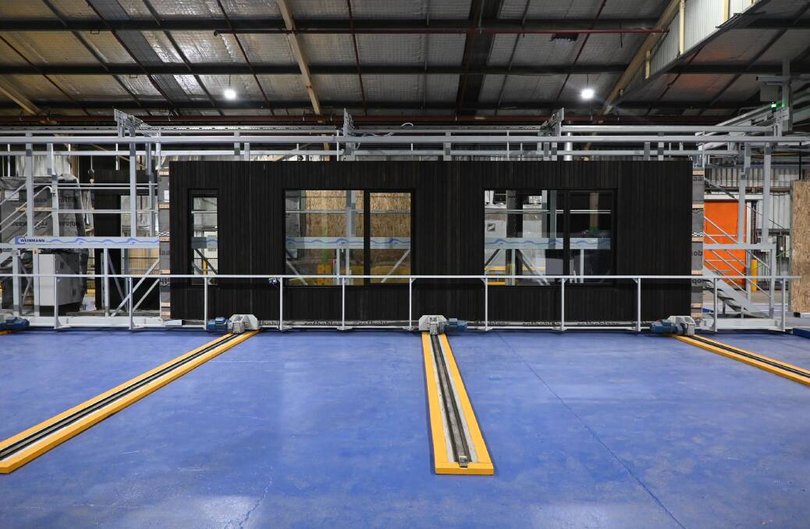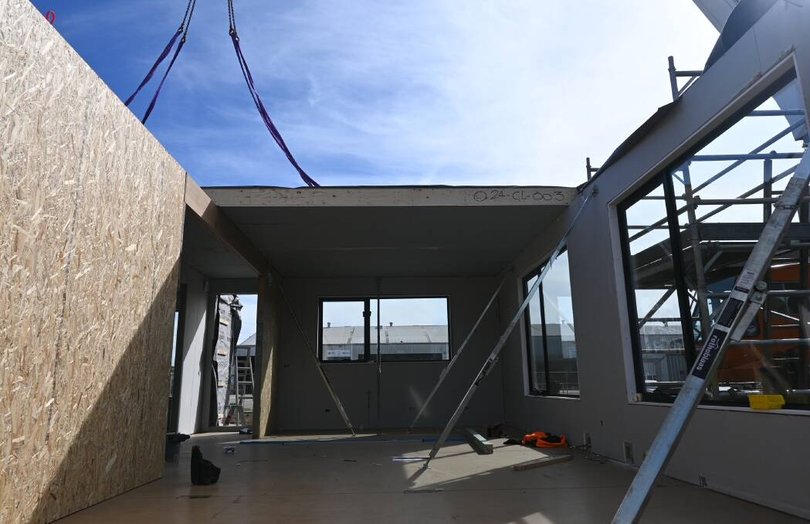Could flat-pack housing be a game changer for Australia's housing crisis?

Australia's housing market is grappling with a profound supply problem.
Governments across the country are setting ambitious construction targets to meet demand, but the traditional building industry is struggling to keep pace.
So, what's the answer? According to some experts, it might just be the humble flat-pack.
Sign up to The Nightly's newsletters.
Get the first look at the digital newspaper, curated daily stories and breaking headlines delivered to your inbox.
By continuing you agree to our Terms and Privacy Policy.While many might associate flat-pack with assembling furniture with an allen key, an Australian company based in the regional NSW town of Orange is applying this concept to housing.
This modern approach, known as panelized or "kit of parts" construction, is a departure from conventional building methods.
Building today
Pete Morrison, CEO of Green Timber Technology (GTT), believes the problem isn't a lack of solutions, but a lack of innovation within the construction sector.
"I wouldn't say the construction industry is clearly and utterly broken," said Mr Morrison.
"I think it's just the industry has not evolved. It's not kept pace with technological advancements, like other sectors, like car manufacturing."

The traditional building process, with its reliance on manual labour and on-site construction, is slow and susceptible to weather delays and skilled labour shortages.
This inefficiency is a major bottleneck in the housing pipeline.
In contrast, flat-pack housing, like the system used by GTT, moves the bulk of the construction process into a controlled factory environment.
How does it work?
GTT's facility utilises robotics and automated processes to manufacture floors, walls, and roof panels. The components are then flat-packed onto a truck and delivered to the building site, ready for assembly.
This "kit of parts" system offers a significant advantage over another type of modern construction, modular housing.
Modular homes, often built as complete three-dimensional boxes or "cubes," are inefficient to transport according to Mr Morrison.

"You are literally transporting volumes of air," he said.
Flat-pack systems, on the other hand, can fit three times the building area onto a single truck, dramatically cutting transport costs and emissions.
Once on-site, the panels are quickly assembled. The entire building envelope, including glazing, cladding, and insulation, can be "locked up" in as little as two days.
This speed is a huge benefit for developers and builders, as it slashes holding costs on land and can significantly reduce project timelines by up to half, according to Morrison.
While a single flat-pack home might not be cheaper upfront than a traditionally built one, the true savings come from the project's overall efficiency, according to Mr Morrison.
Reduced labour costs, minimal on-site waste, and a shorter build time all contribute to a more profitable and predictable outcome.

"The fact that GTT has a kit part system suited for those patterns means that a builder can press play on manufacturing, and they can have it within a matter of days, delivered to site and then installed in a matter of weeks," says Mr Morrison.
For now, companies like GTT are focusing on scaling their operations by partnering with volume builders, developers, and community housing providers.
By focusing on volume, they can create efficiencies that will eventually make the product more accessible to everyone.
Mr Morrison said the company is currently focused on developing a kit of parts for recently released NSW government Pattern Book homes.
The plans for these architect-designed homes, across manor houses, terraces, and townhouses, come at a large discount and planning permission for them has been accelerated.
Speeding up the construction phase, through the GTT kit of part then plays the next step in also accelerating the construction time.
However, Mr Morrison said he can see the technology being rolled out to owner-builders at a later stage.
Originally published as Could flat-pack housing be a game changer for Australia's housing crisis?
